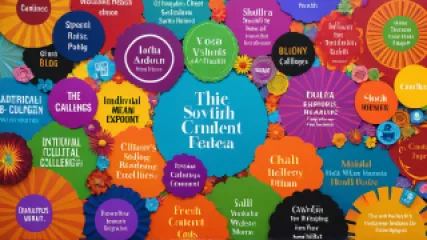Exploring the Mental Health Challenges of Diaspora Individuals: A Research Summary
Exploring the Mental Health Challenges of Diaspora Individuals: A Research Summary
The experience of being a member of the diaspora, the global community of individuals who have relocated from their countries of origin, can be both enriching and profoundly challenging. While the opportunity to immerse oneself in new cultures and embrace diverse perspectives is a privilege, the process of adapting to unfamiliar environments, navigating language barriers, and grappling with a sense of disconnection from one's roots can take a significant toll on mental health. In this comprehensive research summary, we delve into the unique psychological stressors faced by diaspora individuals and explore the essential strategies and resources that can support their well-being.
The Complexity of the Diaspora Experience
The diaspora experience is multifaceted, encompassing a wide range of sociocultural, economic, and interpersonal factors that can impact mental health. According to a study conducted by the International Organization for Migration (IOM), diaspora individuals often face a higher risk of developing mental health issues, such as depression, anxiety, and post-traumatic stress disorder (PTSD), compared to their non-migrant counterparts. This can be attributed to the profound sense of loss, grief, and disorientation that can accompany the process of relocation and the subsequent adaptation to a new way of life.
One of the primary challenges faced by diaspora individuals is the loss of their familiar social support networks. As they leave behind family, friends, and communities, they must rebuild their support systems in a foreign environment, which can be a daunting and isolating experience. This sense of disconnection can be exacerbated by language barriers, cultural differences, and difficulties in securing employment or educational opportunities that align with their skills and aspirations.
Additionally, the process of acculturation, or the adaptation to a new cultural context, can be a significant source of stress. Diaspora individuals may experience a clash between their traditional values, beliefs, and practices and the norms of the host country, leading to a sense of inner conflict and a struggle to maintain their cultural identity. This can manifest in feelings of marginalization, discrimination, and a lack of belonging, all of which can have a profound impact on mental well-being.
The Unique Challenges Faced by Diaspora Youth
Adolescents and young adults within the diaspora community face an additional set of challenges that can profoundly impact their mental health. As they navigate the complexities of identity formation and the transition to adulthood, they often find themselves caught between the cultural expectations and traditions of their family and the dominant societal norms of the host country. This "cultural collision" can lead to feelings of confusion, isolation, and a sense of not belonging to either their ancestral heritage or the new environment they find themselves in.
A study published in the Journal of Immigrant and Minority Health found that diaspora youth are at a higher risk of developing anxiety, depression, and substance abuse issues compared to their non-migrant peers. The pressure to excel academically, fulfill familial obligations, and maintain a sense of cultural pride can be overwhelming, leading to increased stress, burnout, and a reduced sense of self-worth.
Moreover, the unique challenges faced by diaspora youth can be further exacerbated by the lack of culturally sensitive mental health resources and the stigma surrounding mental health issues within some diaspora communities. This can create a significant barrier to seeking help and accessing the support they desperately need.
Navigating the Intersection of Identity and Mental Health
The intersection of identity and mental health is a crucial aspect of the diaspora experience that must be addressed. Diaspora individuals often grapple with the question of "who am I?" as they strive to reconcile their cultural heritage with the demands of their new environment. This identity crisis can lead to feelings of disconnection, a lack of self-worth, and a sense of not belonging anywhere.
Furthermore, the pressure to maintain a strong cultural identity and uphold traditional values can sometimes come at the expense of personal growth and self-expression. Diaspora individuals may feel compelled to suppress their true selves or conform to societal expectations, leading to a profound sense of inauthenticity and psychological distress.
Addressing this intersection requires a holistic approach that acknowledges the multifaceted nature of identity and its impact on mental health. It is essential to create safe spaces where diaspora individuals can explore, express, and celebrate their cultural heritage while also embracing their evolving sense of self.
Cultivating Resilience and Fostering Support
While the mental health challenges faced by diaspora individuals can be daunting, there are numerous strategies and resources available to support their well-being. Building resilience, developing coping mechanisms, and accessing culturally sensitive mental health services are key to navigating the complexities of the diaspora experience.
One essential aspect of cultivating resilience is the cultivation of strong social support networks. Connecting with other diaspora individuals, either in person or through online communities, can provide a sense of belonging, shared experiences, and mutual understanding. These connections can serve as a vital source of emotional, social, and practical support, helping diaspora individuals to feel less isolated and more empowered in their journey.
Additionally, the development of coping strategies that honor cultural traditions and practices can be incredibly beneficial. This may include engaging in spiritual or religious practices, maintaining connections with one's homeland through food, music, or art, or finding ways to celebrate and preserve cultural heritage. These activities can help diaspora individuals to maintain a sense of cultural identity, find solace in familiar rituals, and develop a greater sense of personal agency and resilience.
Accessing culturally sensitive mental health services is also crucial for supporting the well-being of diaspora individuals. Mental health professionals who understand the unique challenges and lived experiences of the diaspora community can provide targeted interventions, such as trauma-informed care, culturally-responsive psychotherapy, and holistic approaches that address the intersections of identity, migration, and mental health.
Embracing the Transformative Power of the Diaspora Experience
While the mental health challenges faced by diaspora individuals can be profound, it is important to recognize the transformative power of the diaspora experience. The process of adapting to a new culture, navigating cross-cultural differences, and developing a sense of resilience and adaptability can cultivate a unique perspective, empathy, and personal growth that can enrich both the individual and the communities they inhabit.
Diaspora individuals are often well-positioned to serve as cultural bridges, facilitating cross-cultural understanding, fostering inclusive communities, and contributing to the rich diversity of the global landscape. By embracing the complex and multifaceted nature of their identity, diaspora individuals can find strength, purpose, and a deeper appreciation for the human experience.
In conclusion, the mental health challenges faced by diaspora individuals are multifaceted and complex, requiring a holistic approach that acknowledges the unique experiences, intersections, and resilience of this global community. By cultivating supportive networks, accessing culturally sensitive resources, and embracing the transformative power of the diaspora experience, we can empower diaspora individuals to thrive and contribute to the betterment of our interconnected world.
Key Takeaways:
- Diaspora individuals face a higher risk of developing mental health issues, such as depression, anxiety, and PTSD, due to the profound sense of loss, grief, and disorientation that can accompany the process of relocation and adaptation.
- Adolescents and young adults within the diaspora community face additional challenges in navigating the complexities of identity formation and the "cultural collision" between family traditions and societal norms.
- Addressing the intersection of identity and mental health is crucial, as diaspora individuals grapple with the question of "who am I?" and the pressure to maintain cultural identity while also embracing personal growth.
- Cultivating resilience through strong social support networks, coping strategies that honor cultural traditions, and accessing culturally sensitive mental health services are key to supporting the well-being of diaspora individuals.
- The diaspora experience can be transformative, empowering diaspora individuals to serve as cultural bridges, foster inclusive communities, and contribute to the rich diversity of the global landscape.
About the Author
Kurt Day is a senior research fellow at the Center for Global Mental Health, with a focus on the mental health challenges faced by diaspora communities. He has conducted extensive research on the intersection of identity, migration, and psychological well-being, and has published numerous peer-reviewed articles and book chapters on the topic.
"The diaspora experience is a testament to the resilience and adaptability of the human spirit. By embracing the complexities and celebrating the diversity of this global community, we can create a more inclusive and supportive world for all." - Kurt Day






